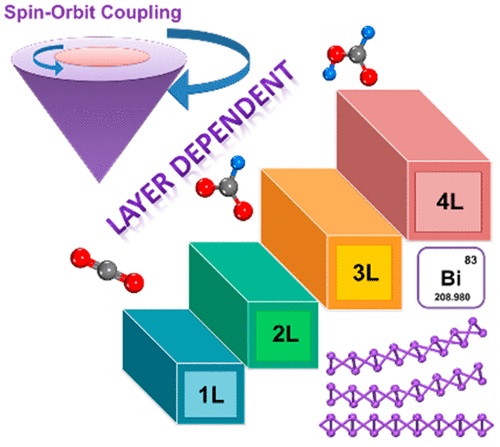李亚飞教授课题组在JOURNAL OF PHYSICAL CHEMISTRY LETTERS发表研究论文
Spin-Orbit Coupling-Dominated Catalytic Activity of Two-Dimensional Bismuth toward CO2 Electroreduction: Not the Thinner the Better
Wang, Y (Wang, Yu)[ 1,2 ] ; Zhu, XR (Zhu, Xiaorong)[ 1 ] ; Li, YF (Li, Yafei)[ 1 ]*(李亚飞)
[ 1 ] Nanjing Normal Univ, Sch Chem & Mat Sci, Jiangsu Key Lab New Power Batteries, Jiangsu Collaborat Innovat Ctr Biomed Funct Mat, Nanjing 210023, Jiangsu, Peoples R China
[ 2 ] Nanyang Technol Univ, Nanyang Environm & Water Res Inst, Environm Proc Modelling Ctr, 1 CleanTech Loop, Singapore 637141, Singapore
JOURNAL OF PHYSICAL CHEMISTRY LETTERS,201908,10(16), 4663-4667
Developing two-dimensional (2D) catalysts that are as thin as possible to increase the density of active sites seems to always be desirable for the pursuit of ideal catalytic performance. In this work, by taking CO2 electroreduction on 2D bismuth (Bi) as an example, we theoretically demonstrated that it is not always "the thinner the better" for 2D electrocatalysts. Because of the existence of a sizable band gap, the Bi monolayer exhibits lower catalytic activity than thicker metallic Bi nanosheets. Remarkably, because of the considerable stabilization energy contributed by the spin-orbit coupling effect, the Bi bilayer shows the best catalytic performance among all studied Bi nanosheets. By constructing a microkinetic model of CO2 conversion to HCOOH, we provided an explicit demonstration of the thickness dependent activity of Bi nanosheets. Our results significantly deepen our understating of the fundamental factors governing the activity of 2D catalysts.

文章链接:
https://pubs.acs.org/doi/10.1021/acs.jpclett.9b01406
版权与免责声明:本网页的内容由收集互联网上公开发布的信息整理获得。目的在于传递信息及分享,并不意味着赞同其观点或证实其真实性,也不构成其他建议。仅提供交流平台,不为其版权负责。如涉及侵权,请联系我们及时修改或删除。邮箱:sales@allpeptide.com